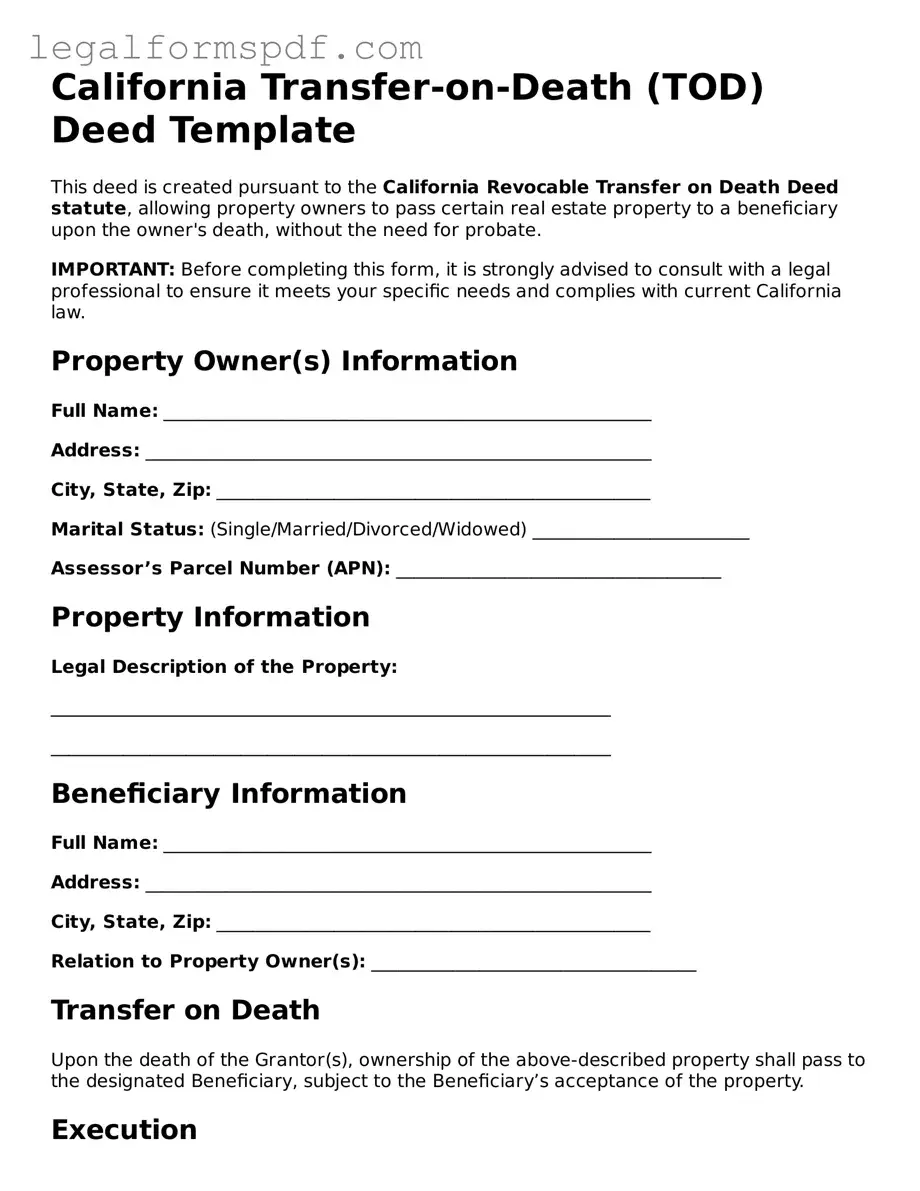California Transfer-on-Death (TOD) Deed Template
This deed is created pursuant to the California Revocable Transfer on Death Deed statute, allowing property owners to pass certain real estate property to a beneficiary upon the owner's death, without the need for probate.
IMPORTANT: Before completing this form, it is strongly advised to consult with a legal professional to ensure it meets your specific needs and complies with current California law.
Property Owner(s) Information
Full Name: ______________________________________________________
Address: ________________________________________________________
City, State, Zip: ________________________________________________
Marital Status: (Single/Married/Divorced/Widowed) ________________________
Assessor’s Parcel Number (APN): ____________________________________
Property Information
Legal Description of the Property:
______________________________________________________________
______________________________________________________________
Beneficiary Information
Full Name: ______________________________________________________
Address: ________________________________________________________
City, State, Zip: ________________________________________________
Relation to Property Owner(s): ____________________________________
Transfer on Death
Upon the death of the Grantor(s), ownership of the above-described property shall pass to the designated Beneficiary, subject to the Beneficiary’s acceptance of the property.
Execution
This document must be signed in the presence of a notary public and recorded with the county recorder's office before the transferor's death to be effective.
Signatures
Property Owner(s) Signature: ______________________________________
Date: __________________________________________________________
State of California
County of _________________________
On this _____ day of _____________, 20__, before me, _________________________ (name and title of the officer), personally appeared ____________________________________________________, who proved to me on the basis of satisfactory evidence to be the person(s) whose name(s) is/are subscribed to the within instrument, and acknowledged to me that he/she/they executed the same in his/her/their authorized capacity(ies), and that by his/her/their signature(s) on the instrument, the person(s), or the entity upon behalf of which the person(s) acted, executed the instrument.
I certify under PENALTY OF PERJURY under the laws of the State of California that the foregoing paragraph is true and correct.
WITNESS my hand and official seal.
Signature of Notary Public: ______________________________
My Commission Expires On: _______________________________
